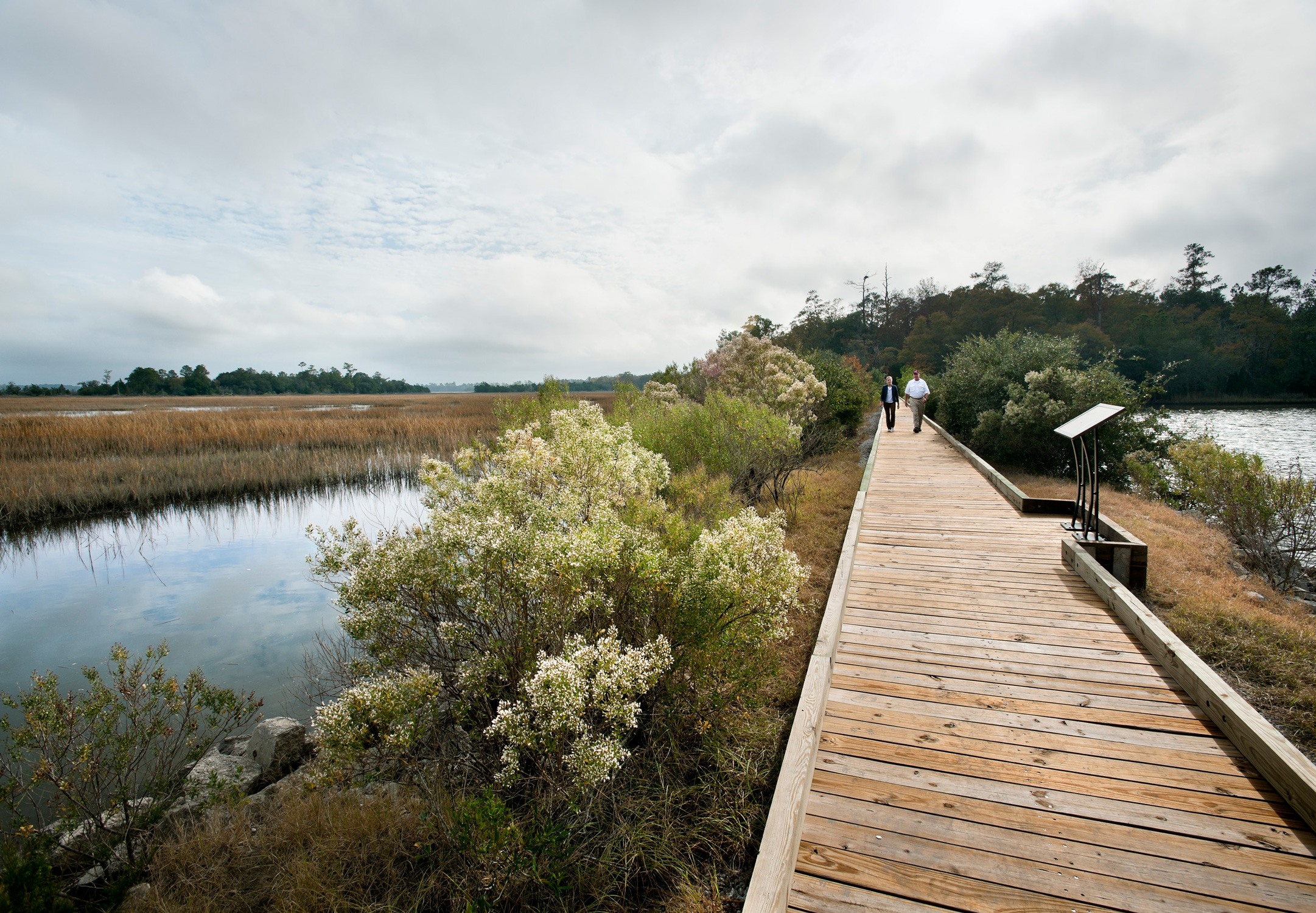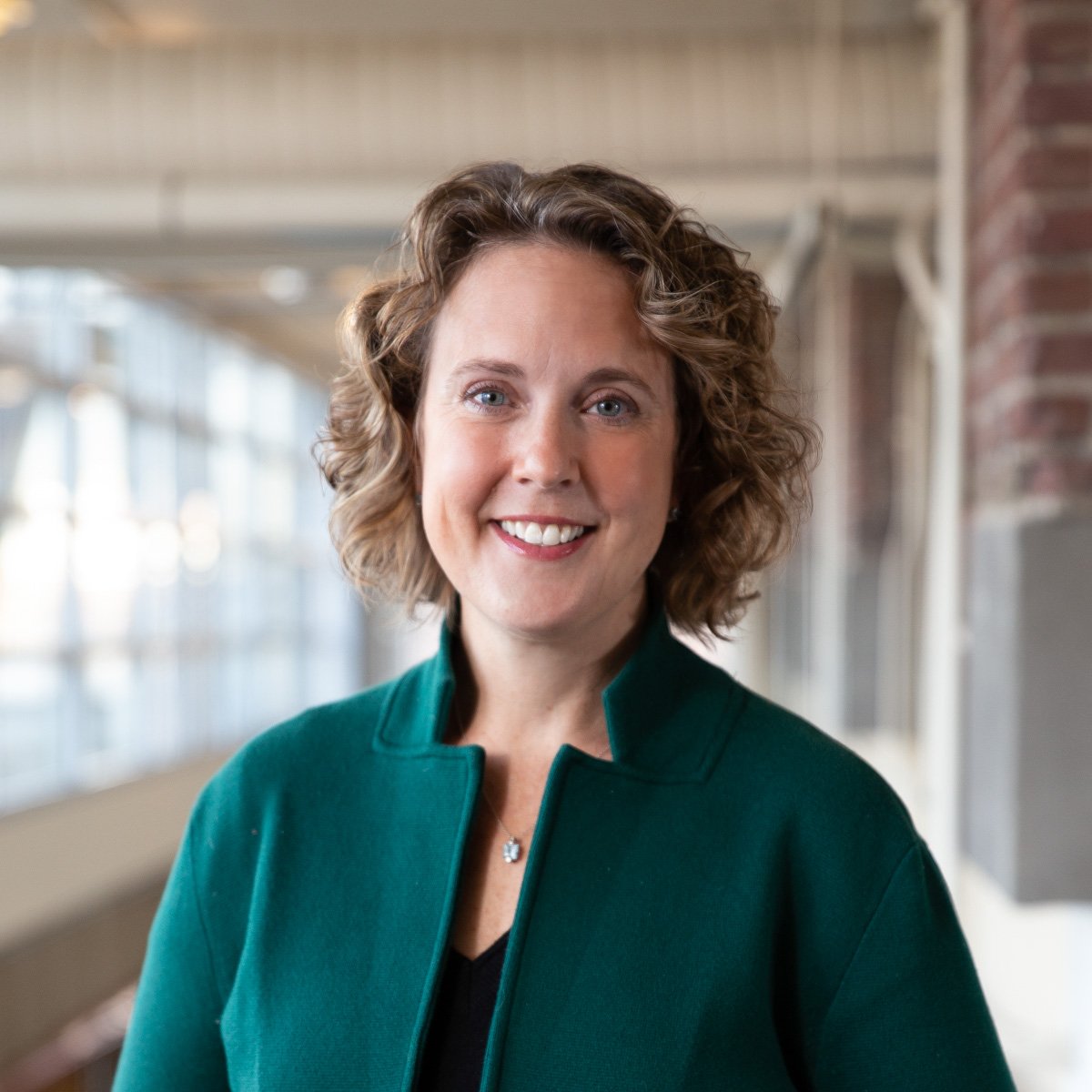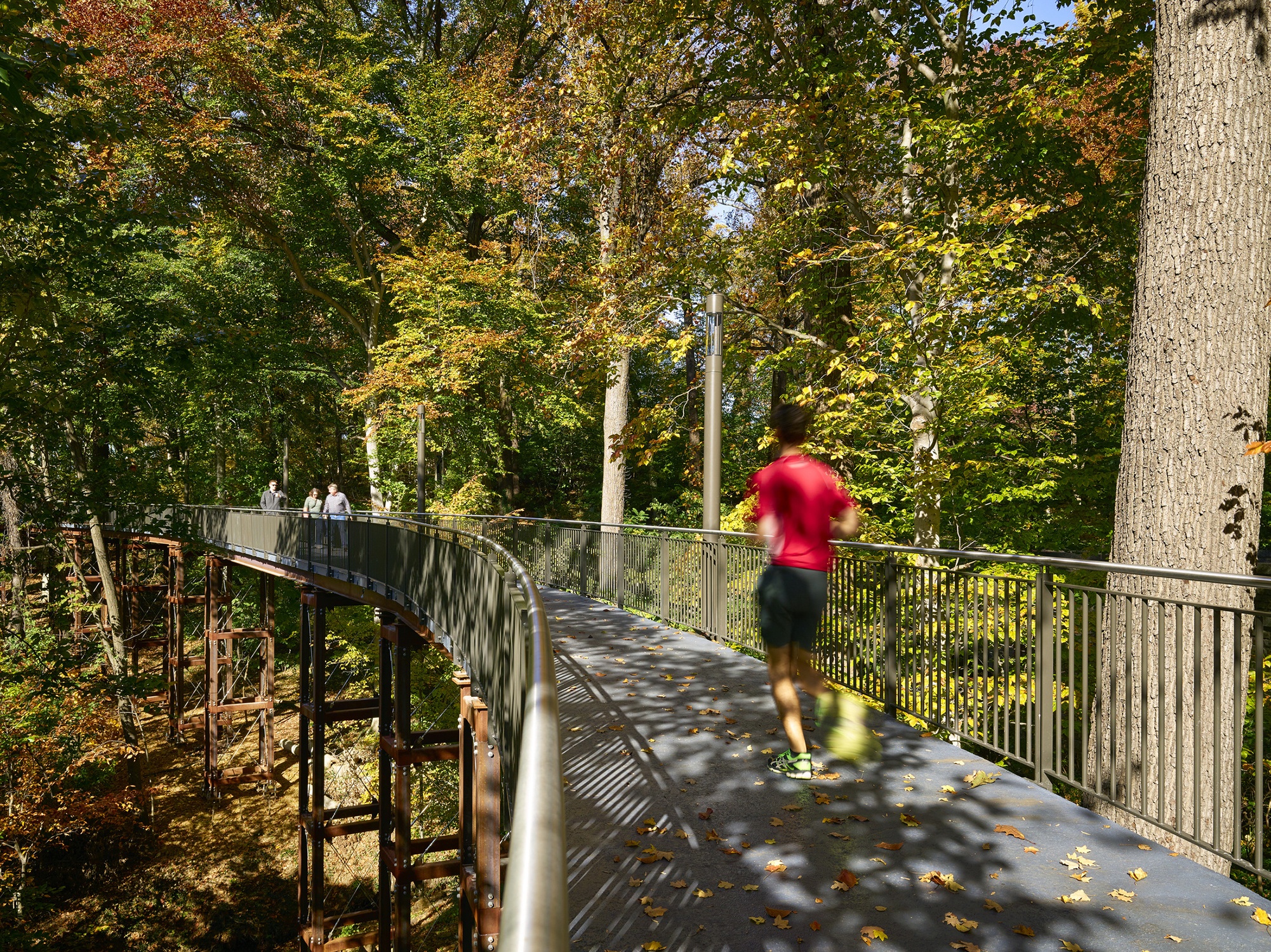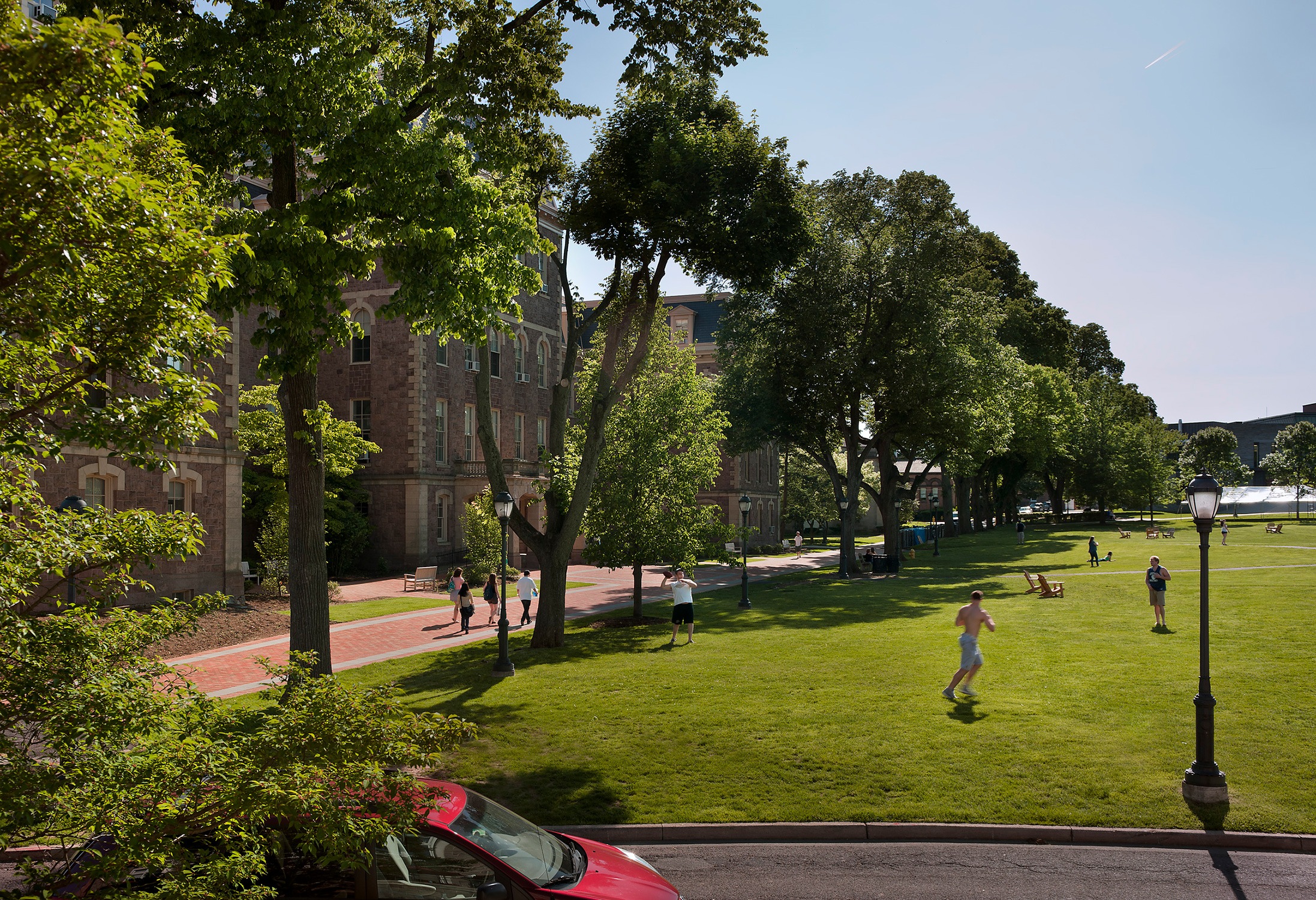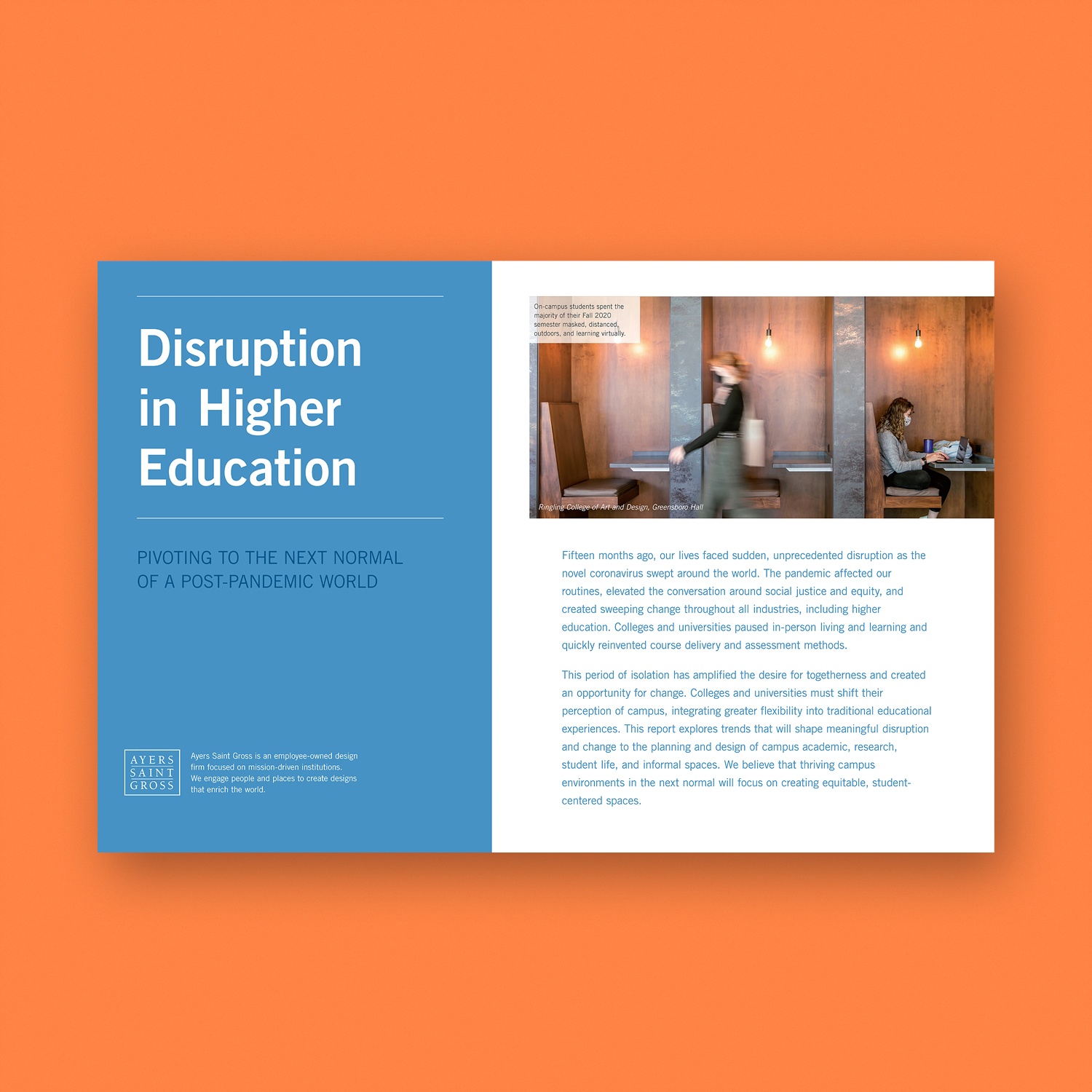Principal Kevin Petersen joined a panel of experts presenting as part of the American Society of Landscape Architects (ASLA) Campus Resiliency Series. Discussing the ways in which colleges and universities could adapt campus outdoor spaces in response to COVID-19, this panel of experts included landscape architects and planners in both the private sector as well as those working for colleges and universities. These events are excellent opportunities to share our expertise and learn from our peers and clients. We are thankful to the ASLA for the opportunity to participate.
Outdoor spaces have always been a memorable part of the collegiate experience, helping to define the character of a campus and providing iconic places for students to gather. In unknown times, open spaces can be adaptable and offer solutions that are effective in the short term but can also be long-term improvements.
Kevin shared results from our recent survey and spoke to the ways that COVID-19 is accelerating shifts in campus outdoor spaces that are already underway, and the ways in which a campus can harness existing assets. There is a natural tension between the desire to have a vibrant campus environment, which so frequently depends on density, and the need to have the safest environment. Kevin looked closely at what could be operational changes and the ways a campus could leverage assets into long-term solutions based on thoughtful planning and design.
The campus experience, and the place of open spaces, can be thought of as a collection of three major components: wellness, learning, and student life.
Wellness
Over the past two months, many of us have found solace in nature while social distancing. We’re reminded of the power of the outdoors. Dating back centuries, the idea that outdoor spaces offer a remedy for students away from academic rigors can be seen in the original plan for the academical village of the University of Virginia.
Landscape enhancements can have a powerful impact with modest investment. Outdoor spaces provide a therapeutic and calming escape, and gathering outdoors with appropriate distancing practices may offer reduced risk.
Learning
Every institution has difficult decisions to make concerning reopening. Social distancing can inhibit experiential learning, community building, and research. Although there are many opportunities to expand learning outside, it is not viable in all cases, particularly when academic programs require specialized tools and equipment.
Campuses need to think carefully about how to categorize and prioritize learning experiences and environments. There is no one-size-fits-all solution. In many cases, it’s unclear what will and will not work, as there are very few – if any – proven precedents. However, keeping in mind the trends that COVID-19 has accelerated, an institution can target investments toward near-term solutions that will still be viable long-term.
Prioritizing flexibility and adaptability in learning environments – both interior and exterior – to support different pedagogies and learners has been an ongoing trend; multi-use spaces will likely see more utilization for the foreseeable future. For programs that are not equipment-dependent, establishing an outdoor classroom or other landscape enhancement can serve the campus well now and become established as a flexible gathering space on campus experience years from now.
Student Life
Finally, when we think about a campus as providing a place-based experience, student life and recreation is important in rounding out that experience. Landscapes can offer safe outside recreational experiences. We are all witnessing how parks, cities, and institutions are using their outdoor spaces, waterfronts, and other natural resources to reimagine recreation in the COVID-era. Collegiate landscapes can similarly rely on their recreational spaces to inject levity into an otherwise challenging experience.
Many campuses will have a rare opportunity during the transitional period: lower parking demand. This might be an opportunity to experiment with pilot projects, like closing a parking lot or road to vehicles and repurposing it for recreational uses like cycling, fitness classes, or outdoor seating for dining. As with learning environments, these do not all have to be temporary. These could be the start of new outdoor experiences that become intimately tied to the identity of the campus.
Amelle Schultz, PLA, LEED AP is a Principal in the Landscape Architecture practice group and serves as Professional Practice Network Co-Chair of Campus Planning and Design for the ASLA.
